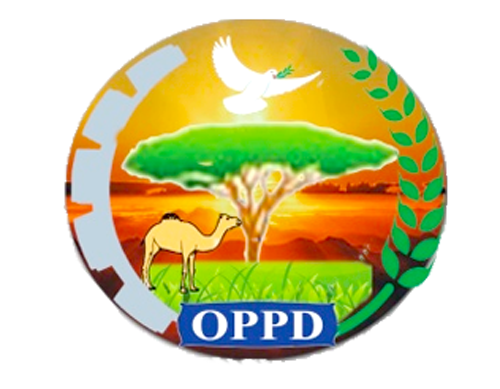Somali Women
- Home
- Somali Women
“Her Childhood, Her right: End Child Marriage Campaign – Somalia Network: Somali Pastoralist Women Network
Child marriage remains a critical challenge in Somalia, driven by a combination of poverty, social norms, and growing climate pressures that disrupt livelihoods and push families toward harmful coping mechanisms. This Call to Action unites legal, faith-based, community, and youth actors to protect girls’ rights and end child marriage through six coordinated pillars—advocacy, mobilization, digital engagement, coalition building, monitoring, and sustainability. By linking child protection with education, gender equality, and climate resilience, the initiative aims to build a future where every Somali girl can grow, learn, and thrive free from early marriage.
Objective: Clarify and communicate Somali laws and Islamic perspectives on child marriage.
Technical Instructions:
- Develop a bilingual legal explainer (Somali/English) using clear, culturally sensitive language.
- Form a technical team of volunteer lawyers, women’s rights advocates, and translators.
- Design and distribute materials through print, PDF, and video formats.
- Organize monthly legal clinics with structured Q&A forms and attendance tracking.
- Use a feedback survey to assess community understanding and legal attitude changes.
- Create advocacy briefs for district and regional leaders summarizing legal gaps and proposed community bylaws, with a section on the intersection between climate stress, poverty, and early marriage risk.
Objective: Strengthen local ownership and community dialogue to end child marriage.
Technical Instructions Step by Step:
- Map and select 30–50 community champions (elders, imams, teachers, youth leaders) per region.
- Conduct a 2-day ToT (Training of Trainers) with modules on climate resilience, child protection, communication, and faith-based messaging.
- Design “Safe Futures Forums” event templates with facilitation guides, participant registers, and post-event feedback forms.
- Establish WhatsApp broadcast channels segmented by region; schedule weekly messages using a content calendar.
- Collect and archive audio or video testimonies from community leaders for advocacy use.
Youth-Led Elements: adding youth-led forums or digital takeovers to centre young voices directly.
Objective: Use media and storytelling to influence attitudes and policy.
Technical Instructions:
- Develop a creative concept brief for the short film, including script outline, production schedule, and distribution plan.
- Engage local production teams ensuring gender-sensitive and culturally accurate visuals.
- Design social media content packs:
- 10 sample posts (bilingual)
- 5 survivor stories (with consent forms) showing how climate shocks (e.g losing livestock, displacement) contribute to marriage decisions.
- A trauma-informed storytelling guide for teams collecting stories
- 3 short video reels and poems.
- Use the campaign hashtag #HerChildhoodHerRight across all platforms.
- Assign a digital monitoring team to track engagement analytics (reach, shares, comments).
- Partner with 5–10 Somali influencers or diaspora youth pages for amplification.
- Creative Expansion: the usage of a radio drama or spoken word series for regions with low internet access
Objective: Coordinate joint action among member organizations and networks.
Technical Instructions:
- Establish a Coalition Secretariat or Coordination Desk (shared email, Google Drive, and WhatsApp group).
- Develop a membership MoU outlining roles, contributions, and decision-making mechanisms.
- Schedule bi-monthly virtual coordination meetings using Zoom or Google Meet.
- Produce a shared campaign toolkit (posters, captions, story prompts, and talking points).
- Collaborate with climate or environmental justice groups who see gender and Climate link
- Use collaborative reporting templates for partners to submit activity updates and lessons learned.
Objective: Measure effectiveness and document community-level change.
Technical Instructions:
- Design a Monitoring, Evaluation, and Learning (MEAL) framework with clear indicators:
- of forums held
- of girls/families reached
- of participants recognizing climate stress as a driver of child marriage
- Policy changes or declarations recorded
- Media reach analytics
- Collect data through online forms (Kobo, Google Forms) and manual registers.
- Maintain a photo and video database with metadata (location, date, consent).
- Compile quarterly progress summaries and a final Legacy Impact Report.
- Draft a policy brief for submission to the Ministry of Women and Human Rights Development with findings and recommendations.
Objective: Ensure the project’s benefits, impacts and activities continue after the implementation period ends.
Technical instructions:
- Train local “legal champions” and youth advocates to keep raising awareness
- Work with schools and religious leaders to institutionalize the inclusion of climate adaptation and resillience messaging in community bylaws, school curricula, and religious teachings
- Secure government commitment to continue awareness programs
- Develop digital materials or tools that can be used long-term
Closing Note:
This campaign is more than a project – it is a promise.
A promise that every Somali girl deserves to grow, learn, and dream free from harm, free from fear, and free to choose her own future.
Together, we stand for Her Childhood, Her Right.
NB: Data Protection: All photos, videos, and testimonies collected during field activities must be obtained with informed consent from the participants. Sensitive information should be handled confidentially and used only for authorized purposes. Personal identifiers must be protected, and images or testimonies should not be shared publicly without explicit permission, in line with data protection and privacy standards.
